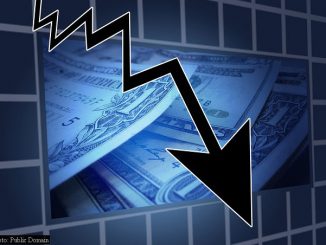In a pivotal moment for U.S. monetary policy, Federal Reserve Chair Jerome Powell has signaled a shift in the central bank’s approach to interest rates. Speaking at the Kansas City Fed’s annual economic symposium in Jackson Hole, Wyoming, Powell delivered a message that was both clear and consequential: “The time has come for policy to adjust.”
This straightforward declaration marks a dramatic turning point in the Fed’s strategy, potentially heralding the end of an era characterized by aggressive rate hikes aimed at taming inflation. Powell’s words, “The direction of travel is clear,” leave little room for ambiguity about the Fed’s intentions.
However, true to form, the Fed Chair was careful to maintain flexibility in the central bank’s approach. Powell emphasized that the “timing and pace of rate cuts will depend on incoming data, the evolving outlook, and the balance of risks.” This nuanced stance reflects the Fed’s commitment to data-driven decision-making, even as it signals a shift in policy direction.
The context for Powell’s remarks is crucial. His speech comes just weeks before the Fed’s September 17-18 meeting, which now seems poised to usher in the first interest rate cut since 2020. This potential rate cut would mark a significant milestone in the post-pandemic economic recovery, signaling confidence in the stability of inflation and a growing concern about other economic indicators.
One such indicator that has caught the Fed’s attention is the labor market. Powell acknowledged recent softness in employment data, stating that the Fed does not “seek or welcome further cooling in labor market conditions.”
This comment comes in the wake of a July jobs report that sent tremors through the market, revealing a mere 114,000 jobs added to the economy and an unemployment rate of 4.3% – the highest since October 2021.
Adding to these concerns, recent data suggests that previous employment reports may have overstated the strength of the job market. A staggering 818,000 fewer people were employed in the U.S. economy as of March than previously thought, casting a shadow over the narrative of a robust labor market.
In light of these revelations, Powell’s assessment that “it seems unlikely that the labor market will be a source of elevated inflationary pressures anytime soon” takes on added significance.
The market’s reaction to Powell’s speech has been swift and decisive. Investors had already priced in nearly 100% odds of a rate cut in September, with the debate centering on whether the cut would be 0.25% or 0.50%. Powell’s remarks seem to have tipped the scales, with odds favoring a 0.25% cut by a margin of two to one.
As the dust settles on Powell’s Jackson Hole address, the financial world is bracing for a new chapter in monetary policy. The Fed’s pivot towards rate cuts represents not just a technical adjustment, but a broader reassessment of the economic landscape.
With inflation cooling and labor market concerns growing, the central bank is recalibrating its approach to navigate the complex realities of a post-pandemic economy.
The coming months will be crucial in determining whether this policy shift can achieve the delicate balance of supporting economic growth without reigniting inflationary pressures.
As always, the Fed’s path forward will be closely watched by investors, policymakers, and citizens alike, all of whom have a stake in the economic future that Powell and his colleagues are working to shape.
- Bulenox: Get 45% to 91% OFF ... Use Discount Code: UNO
- Risk Our Money Not Yours | Get 50% to 90% OFF ... Use Discount Code: MMBVBKSM
Disclaimer: This page contains affiliate links. If you choose to make a purchase after clicking a link, we may receive a commission at no additional cost to you. Thank you for your support!





Leave a Reply